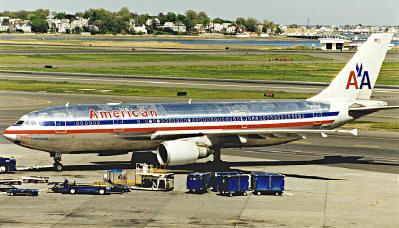Wed, Nov 21, 2012
Requires Modifications To Rudder Control System Or Installation Of Rudder Stops
The FAA has issued an Airworthiness Directive predicated on an incident which occurred 11 years ago. The AD (2012-21-15) applies to all Airbus Model A300 B4-600, B4-600R, and F4-600R series airplanes, and Model A300 C4-605R Variant F airplanes (collectively called A300-600 series airplanes); and Model A310 series airplanes.

According to the FAA, the AD was prompted by "events of excessive rudder pedal inputs and consequent high loads on the vertical stabilizer on several airplanes. This AD requires either incorporating a design change to the rudder control system and/or other systems, or installing a stop rudder inputs warning (SRIW) modification. We are issuing this AD to prevent loads on the vertical stabilizer that exceed ultimate design loads, which could cause failure of the vertical stabilizer and consequent reduced controllability of the airplane."
The event in question was an accident which occurred November 12, 2001, in which the tail of an American Airlines A300-605R came apart shortly after takeoff from JFK airport in New York. The airliner went down in a populated area, resulting in the fatal injury of all 260 people on board the plane, as well as five on the ground.
In its probable cause report, the NTSB said that the cause of the accident was "the in-flight separation of the vertical stabilizer as a result of the loads beyond ultimate design that were created by the first officer's unnecessary and excessive rudder pedal inputs. Contributing to these rudder pedal inputs were characteristics of the Airbus A300-600 rudder system design and elements of the American Airlines Advanced Aircraft Maneuvering Program."
Since the accident, Airbus has issued several service bulletins addressing the issue. The estimated cost of installing a system to warn pilots that they are using excessive rudder forces is between $72,720 and $107,720 per airplane. Installing a system to limit rudder travel would be as high as $195,500 per airliner. The FAA estimates that there are 215 aircraft registered in the U.S. that are affected by the AD. The FAA says that the modifications must be made within 48 months of the AD's effective date of December 14. USA Today reports that Airbus received certification of its proposed warning system in March, but says that there is "no realistic" way that the modifications can be completed within that time frame.
(File image. Not accident airplane)
More News
Aero Linx: International Federation of Airworthiness (IFA) We aim to be the most internationally respected independent authority on the subject of Airworthiness. IFA uniquely combi>[...]
Ultrahigh Frequency (UHF) The frequency band between 300 and 3,000 MHz. The bank of radio frequencies used for military air/ground voice communications. In some instances this may >[...]
A Few Questions AND Answers To Help You Get MORE Out of ANN! 1) I forgot my password. How do I find it? 1) Easy... click here and give us your e-mail address--we'll send it to you >[...]
From 2019 (YouTube Edition): Learning To Paint Without Getting Any On Your Hands PPG's Aerospace Coatings Academy is a tool designed to teach everything one needs to know about all>[...]
Also: Sustainable Aircraft Test Put Aside, More Falcon 9 Ops, Wyoming ANG Rescue, Oreo Cookie Into Orbit Joby Aviation has reason to celebrate, recently completing its first full t>[...]
 ANN's Daily Aero-Linx (05.06.25)
ANN's Daily Aero-Linx (05.06.25) ANN's Daily Aero-Term (05.06.25): Ultrahigh Frequency (UHF)
ANN's Daily Aero-Term (05.06.25): Ultrahigh Frequency (UHF) ANN FAQ: Q&A 101
ANN FAQ: Q&A 101 Classic Aero-TV: Virtual Reality Painting--PPG Leverages Technology for Training
Classic Aero-TV: Virtual Reality Painting--PPG Leverages Technology for Training Airborne 05.02.25: Joby Crewed Milestone, Diamond Club, Canadian Pilot Insurance
Airborne 05.02.25: Joby Crewed Milestone, Diamond Club, Canadian Pilot Insurance



